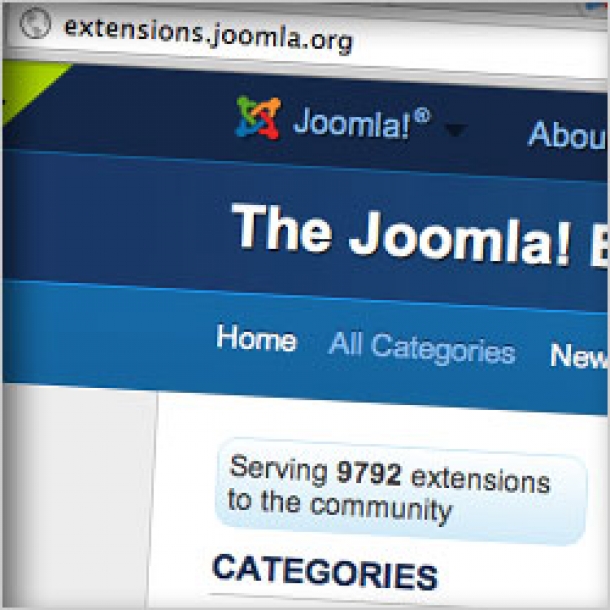As you know, one of the strengths of Joomla lies in its extensibility. There are an incredible number of extensions and templates out there for you to chose from. You can find something for almost any purpose, and the number of extensions and solutions for Joomla increases every day.
From all of these, there are things you can add to the blog that will add value for your readers. Commenting, social media integration and RSS feeds are some of the things you can make use of. In the following chapter, I will discuss how you can find useful, value-adding features for your blog.
A word of caution
It is very tempting to add all kinds of functionality to your blog. After all, there are a gazillion extensions for Joomla out there. It’s like a candy store! Why wouldn’t you take advantage of as many as you can? Simply put: You will slow your site down. That’s a huge, fat reason for limiting the number of extensions you add to your site. In particular, content modules and content plug-ins can slow your site down.
Content modules
Content type modules fetch content from the database tables of your site (like the K2 content module) or from another site (like the recent comments module from Disqus). Some modules don’t cache the content they fetch, so they process the data every time the page is requested. I have also used content modules that fetch article previews (like a latest news module) with thumbnails shown. I was happy with that until realizing that the module resized the images in the browser (using height and width parameters in the IMG tag). This means the full size image is loaded for each thumbnail… Not very nice if you show 5-10 of these on each page.
Content plug-ins
Content plug-ins manipulate the output of your blog content. That means processing time, which can slow down your site significantly. Especially if it involves some kind of image manipulation. Processes like that can really make your site appear sluggish. If you use such a plug-in, make sure it caches the content it has already processed. If not, your readers will leave even before the page has fully loaded.
More extensions, more maintenance
In addition to the fact that more extensions can slow down your site, there is the aspect of maintenance. The more extensions you install, the more laborious it will be to keep them updated. You will need some way of monitoring all of the extensions to know when updates are released. This is particularly true for security releases.
Furthermore, you will need to manually upgrade every site you manage to the latest version of the extension. This requires performing a site backup before upgrading. Backing up is crucial so that you are able to roll back if the upgrade causes any problems. After installing the new version, you will need to test the site to ensure everything is working as expected. And you should take a look at the new features of the extension to learn how they can improve or otherwise will influence your site.
All in all, installing extensions means future work. Or, if you are lazy, the possibility of getting your site hacked because of security holes in outdated extensions. In short, consider the extensions you install carefully.
This is perhaps another argument in favor of using a full-fledged blogging component. In that case, you only need to update one extension.
Some developers update their extensions constantly (perhaps to stay on top of the «last updated» list in the Joomla Extensions Directory?). Other developers rarely update and are slow to release security updates. These are factors you should consider when choosing extensions. Getting a new version every single week can be a real hassle if you have many sites to maintain.
So, consider well what extensions you install and keep them updated.
This post is taken from a chapter in my recently published book Blogging with Joomla, which sells for only US$9.


